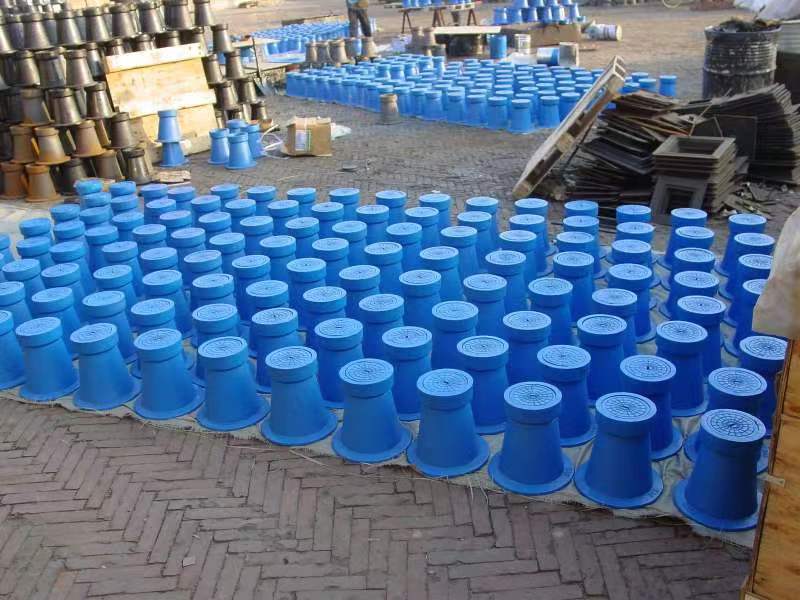Innovative Manhole Cover Solutions for Enhanced Urban Infrastructure and Sustainable City Development
The Next Generation of Manhole Covers Innovation and Sustainability
In urban infrastructure, manhole covers play an essential yet often overlooked role in our daily lives. These unassuming discs not only provide access to underground utilities but also ensure the safety and functionality of city streets. However, the traditional metal manhole covers are beginning to evolve, giving rise to the concept of “next-generation manhole covers.” This innovative approach focuses on sustainability, safety, and technological advancements to enhance urban environments.
Innovations in Materials
One of the most significant advancements in the world of manhole covers is the introduction of new materials. Traditional cast iron covers are heavy, prone to theft, and susceptible to corrosion. In contrast, next-gen manhole covers utilize advanced composite materials that are lighter, more durable, and resistant to environmental degradation. These materials can include recycled plastics, fiberglass, and even concrete composites that reduce the carbon footprint associated with manufacturing.
Incorporating sustainable materials in the production of manhole covers not only minimizes waste but also addresses the issue of resource depletion. By using recycled and eco-friendly alternatives, cities can take a step towards a circular economy, reducing their environmental impact and embracing a greener future.
Smart Technology Integration
The future of manhole covers is not only about materials but also about technology. Smart manhole covers equipped with sensors are an exciting development. These sensors can monitor various parameters, such as temperature, humidity, and even seismic activity. By integrating Internet of Things (IoT) technology, cities can create a network of connected manholes that provide real-time data, enabling more efficient maintenance and management of urban utilities.
For instance, if a sensor detects a sudden increase in temperature or unusual vibrations, it can alert city maintenance teams to a potential issue, preventing accidents and improving safety. Additionally, these smart manhole covers can assist in vehicle and pedestrian traffic analysis, providing municipalities with valuable insights for urban planning and congestion management.
nexgen manhole cover

Aesthetic and Functional Design
Next-gen manhole covers also prioritize aesthetics and functionality. Traditional covers often create visual blight in urban landscapes. However, innovative designs are now emerging, featuring artistic elements, city logos, or engaging patterns that reflect local culture. This not only enhances the appearance of streets but promotes civic pride and community identity.
Moreover, functional design improvements address issues such as noise and safety. Next-generation covers can be engineered to reduce noise when vehicles drive over them, making urban spaces more pleasant for pedestrians and residents alike. Additionally, better grip designs and materials can prevent slips and falls, ensuring the safety of those who walk over them.
Challenges and Considerations
Despite the many benefits of next-generation manhole covers, challenges remain. The initial cost of developing and implementing these advanced covers may deter some cities, especially those with limited budgets. Furthermore, the integration of smart technologies raises concerns about data privacy and cybersecurity, which must be addressed to ensure public trust.
Conclusion
As urban areas continue to grow and evolve, next-generation manhole covers offer intriguing solutions that combine sustainability, technological innovation, and aesthetic appeal. By rethinking this essential component of infrastructure, cities can enhance public safety, improve operational efficiency, and promote environmental responsibility. Embracing these advancements can lead to smarter, more connected urban spaces for future generations, highlighting the importance of innovation in even the most mundane aspects of city life.
-
The Smarter Choice for Pedestrian AreasNewsJun.30,2025
-
The Gold Standard in Round Drain CoversNewsJun.30,2025
-
The Gold Standard in Manhole Cover SystemsNewsJun.30,2025
-
Superior Drainage Solutions with Premium Gully GratesNewsJun.30,2025
-
Superior Drainage Solutions for Global InfrastructureNewsJun.30,2025
-
Square Manhole Solutions for Modern InfrastructureNewsJun.30,2025
-
Premium Manhole Covers for Modern InfrastructureNewsJun.30,2025
